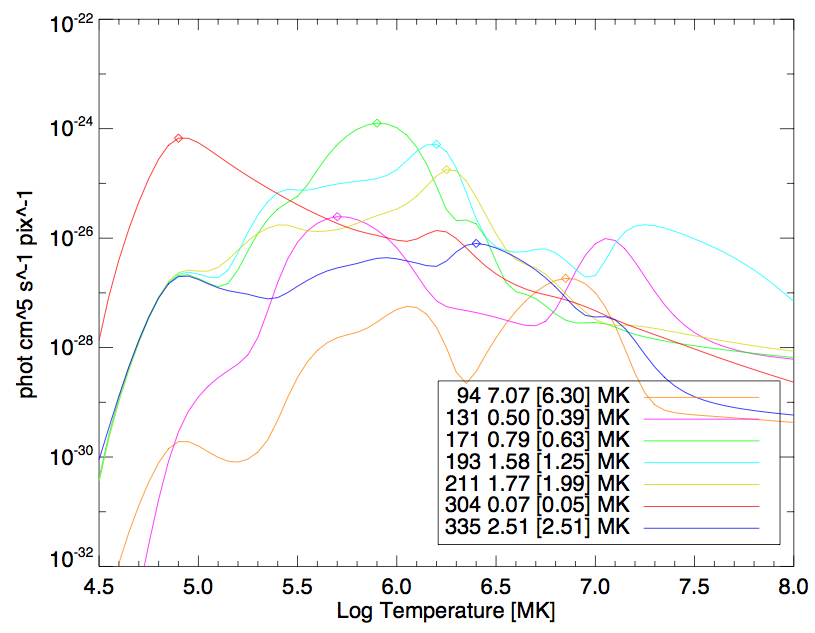M is for Magnifique
From RHESSI Wiki
(→Intro to AIA) |
(→Intro to AIA) |
||
| Line 6: | Line 6: | ||
== Intro to AIA == | == Intro to AIA == | ||
| - | The Atmospheric Imaging Assembly (AIA) is one of three instruments on board the Solar Dynamics Observatory (SDO). AIA consists of four telescopes, each imaging at multiple wavelengths, and provides full disk solar images with a pixel size of 0.6 arcseconds and a time cadence of around 12 seconds. | + | The Atmospheric Imaging Assembly (AIA) is one of three instruments on board the Solar Dynamics Observatory (SDO). AIA consists of four telescopes, each imaging at multiple wavelengths, and provides full disk solar images with a pixel size of 0.6 arcseconds and a time cadence of around 12 seconds. Unlike RHESSI, SDO also observes the Sun continuously, barring occasional eclipse periods. These guaranteed observations and the unprecedented combination of spatial and temporal resolution have opened up a treasure trove of possibilities for solar wave observations. |
[[File:Sdo_wavelengths.png]] | [[File:Sdo_wavelengths.png]] | ||
Revision as of 17:01, 30 November 2010
Contents |
Introduction
On October 12th, new magnetic flux begun to emerge in the middle of the negative polarity region of active region 11112. This emerging flux continued to grow over the next few days stressing the already existing fields and presumably building up magnetic energy. A few days later, on October 16th, the pent up energy was finally released through an M class flare. The region went on to produce a few C class events before rotating around the limb but in a sense its master work was over. This nugget concerns this M class flare which was simultaneously observed by [RHESSI] and SDO. In this nugget, we will focus on the AIA observations which are unique due to the fact that this is the first flare for which AIAs automatic exposure control was enabled. In a future nugget, we will take a look at the SDO EVE observations, a subject which we have already visited in a previous Nugget.
AR 11112
Intro to AIA
The Atmospheric Imaging Assembly (AIA) is one of three instruments on board the Solar Dynamics Observatory (SDO). AIA consists of four telescopes, each imaging at multiple wavelengths, and provides full disk solar images with a pixel size of 0.6 arcseconds and a time cadence of around 12 seconds. Unlike RHESSI, SDO also observes the Sun continuously, barring occasional eclipse periods. These guaranteed observations and the unprecedented combination of spatial and temporal resolution have opened up a treasure trove of possibilities for solar wave observations.
AIA takes solar images at the traditional SOHO/EIT wavelengths of 171 A and 193 A, but also in the 94 A, 131 A, 211 A, 304 A and 335 A bands. Thus for the first time simultaneous full disk imaging of the Sun at a number of different temperatures is possible.
